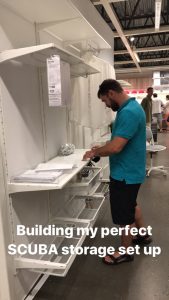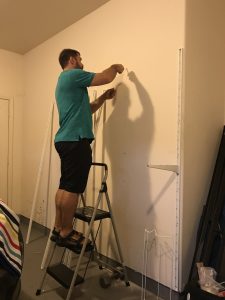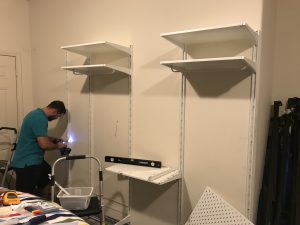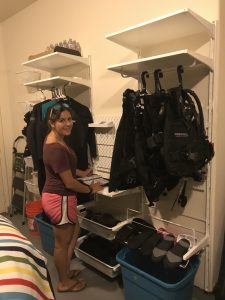Reposted from Ashley Porsche Bugge’s Facebook post.
On May 20, 2018, the waters outside Kewalo Basin, on the island of Oahu, were witness to the last moments of Naval officer and avid scuba diver Brian James Bugge. This is the story of his final moments, as told by his wife.
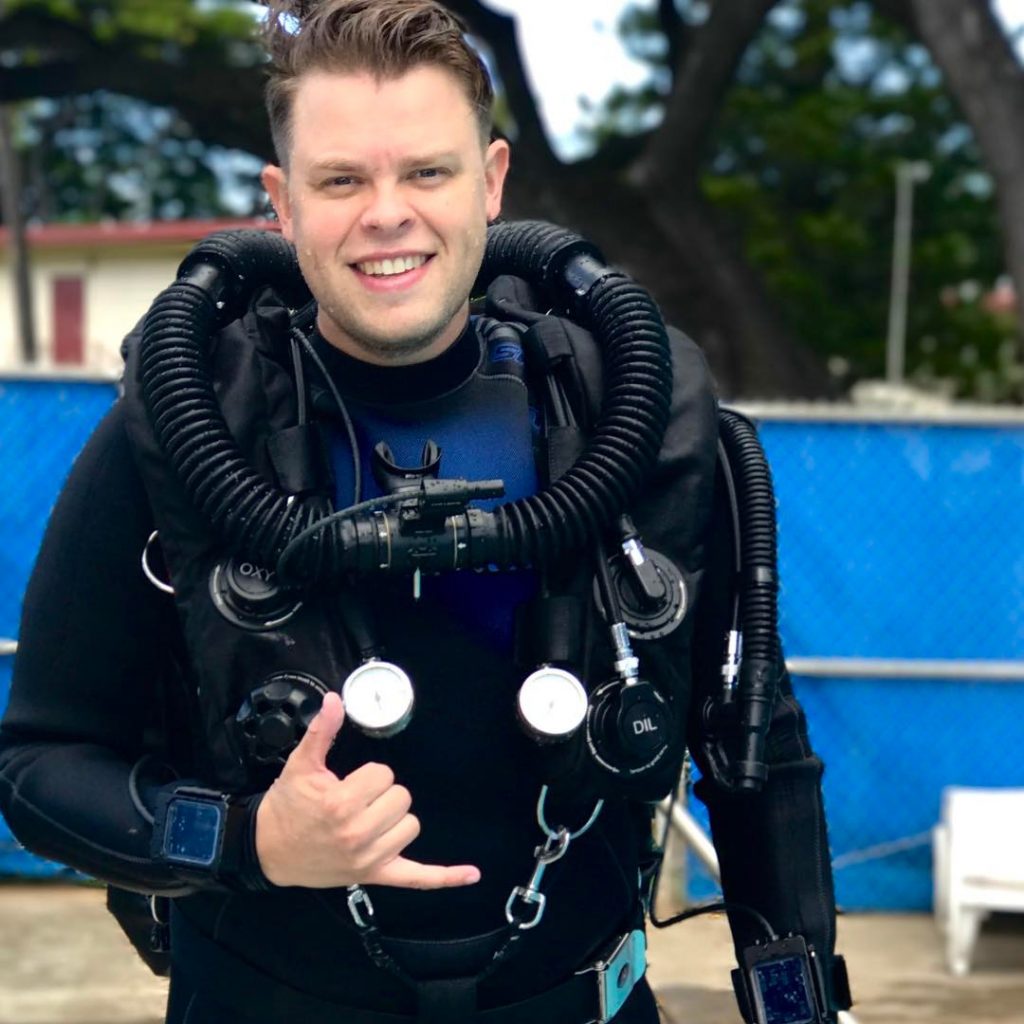
6/26/1982-5/20/2018
My husband, Brian, died in a scuba diving accident one year ago today. Some of you may remember me posting about the accident that claimed his life a few times over the past year, but today, being the one year anniversary of his death I feel compelled to update you, remind you, and encourage you to read his story. To take to heart the information I’m giving you and to take a piece of him with you the next time you dive. I’ve been as transparent as possible, giving you access to the events that claimed Brian’s life as they were deciphered from a review of his recovered closed circuit rebreather. I know it’s highly unusual for a grieving family member to release the information and timeline of her spouses death, however, I believe we can all learn from his mistakes as well as those made by others around him in the process. Too often we see or hear about diving accidents and think ‘That’s so sad, but I would never make that mistake.’ I can guarantee my husband heard and read about diving accidents and had the same thoughts, but unless these mistakes are talked about openly and discussion is encouraged, nothing changes and there will be more fatalities in the same vein.
My husband is dead. There is nothing I can do to change that, however I believe by sharing his story, by taking the time and energy to gift you the knowledge that he no longer can, I hope to prevent you, or your spouse from suffering the same fate as I have these past twelve months. If you’re not familiar with Brian’s story, you can read my previous post here, along with a review of his dive log as recovered, showing his final moments in the water.
Ashley Bugge’s Story of Brian’s Last Moments, dated August 18, 2018
For those of you not familiar with how a rebreather works or how any of this could have happened, here is the cliffs-notes version.
A rebreather works on a closed-circuit loop system. You breathe air through your mouthpiece attached to a loop which cycles through the tube before passing through a scrubber system in your pack, designed to remove the CO2 you’ve exhaled. While the CO2 is being exhaled and scrubbed out, a separate system is injecting fresh O2 (and sometimes additional gasses) into the breathing loop, which in essence allows you to rebreathe your own air.
Brian had spent approximately 48 hours underwater on this device as he prepared to splash the morning of 20 May 2018. He was anxious for this specific class because he’d be diving Trimix for the very first time (a blend of O2, Nitrogen and Helium) and from witness statements the morning of, he did his prebreathe to check the functionality of his rebreather on the dock prior to the boat leaving the dock. It’s assumed he had his O2 tank turned on during this to verify his device was in working order as his computer shows at 7:09AM a predive check was started and completed at 7:12AM at which time he turned his computer to CCR mode. Once on board the boat and headed to the dive site, it’s assumed he turned his O2 tank off – assuming to save gas as he and at least one other student in his class were trained to do – and his computer was manually put in CCR mode at 7:12 and then to surface mode at 7:14. On the quick boat ride to the dive site, he donned his dry suit. The Hawaiian sun is hot, even in the mornings, and he made a comment that his “dry suit clock” had started, meaning he would overheat quickly if they spent a lot of time onboard before jumping in the water. They arrived at the dive site and his CCR computer was turned on, still in surface mode. Brian was one of the first people from the boat in the water – before a number of his classmates and his instructor. He was soon on the side of the boat, noting to his classmates and instructor still on board that there was a bit of a current. A few moments later he signaled he was ready for his camera which was handed over the side of the boat to him. It would have been within minutes of this (his computer shows a submerge of greater than 1.5 meters at 7:49AM) that Brian was witnessed at depth, sinking towards the ocean floor, the mouthpiece out of his mouth. Brian reached the ocean floor (37 meters) where he stayed for approximately one minute before his instructor reached him and did an emergency accent. He was pulled from the water and valiant CPR and rescue attempts were made by those on board as they called 911 and sped back to the marina. It was too late, as I told our 1 and 3 year old children as well as my 6 month pregnant belly later that afternoon, “Dadda drank too much water and would now be diving forever.” He was dead.
So what happened? He didn’t turn his 02 tank back on before jumping in the water. This would have been caught by his computer, if his computer were in dive mode instead of surface mode, which it were not. These two errors made by my husband caused him to breathe heavily at the surface because of the current, depleting the remaining oxygen available to breathe in his closed circuit loop and he quickly became hypoxic, passing out, opening his mouth causing his mouthpiece to fall out, flood with water and pull him under the surface towards the ocean floor.
I made a concerted effort to remove my opinion from this initial post, to reveal only the facts as I had them in regards to the morning of his dive. My opinion is not important, but the facts are and I give them to you in good faith that you’ll use them to learn from. While the physical actions caused by Brian this morning are no doubt what caused his death, I think it’s important to talk about the extenuating circumstances, the behind the scenes information and the contributing factors because I believe that’s where his story can be of use to you and hopefully help prevent this same tragedy from happening again.

The backstory is far reaching, fractured but emergent in nature, however the pertinent facts are here:
Brian didn’t have enough hours or training on his rebreather to be in this class. Yet, because of numerous schedule changes from both the instructor(s) and students, they were months behind schedule when they should have completed this course and that took precedent over being prepared to take it. There was pressure from all sides to complete this course.
There was another instructor scheduled to teach this class who backed out a few days prior, citing the fact he wasn’t comfortable doing this dive with them, “to do this right, we need multiple work up dives… you want proper training, make time for it.” This upset Brian and classmates, demonstrated by a slurry of text messages between each other and their instructors, at which time it was decided their original instructor would take the course back over. Brian text messaged the instructor who cancelled and said, “To be clear, I want quality training. If that means more time for courses or checkout dives then that’s worth it for me.” Instead of this happening, the pressure from the group as a whole to complete this course (Brian included) took precedent and shortcuts were taken.
Brian worked for the dive shop he was training through as the “Marketing Director” and as such was encouraged to take photos and videos of this training dive for marketing and media purposes. He was in this class as a student and his efforts should have been focused on this, not his brand new underwater camera. His role as student/staff were conflicting in this instance.
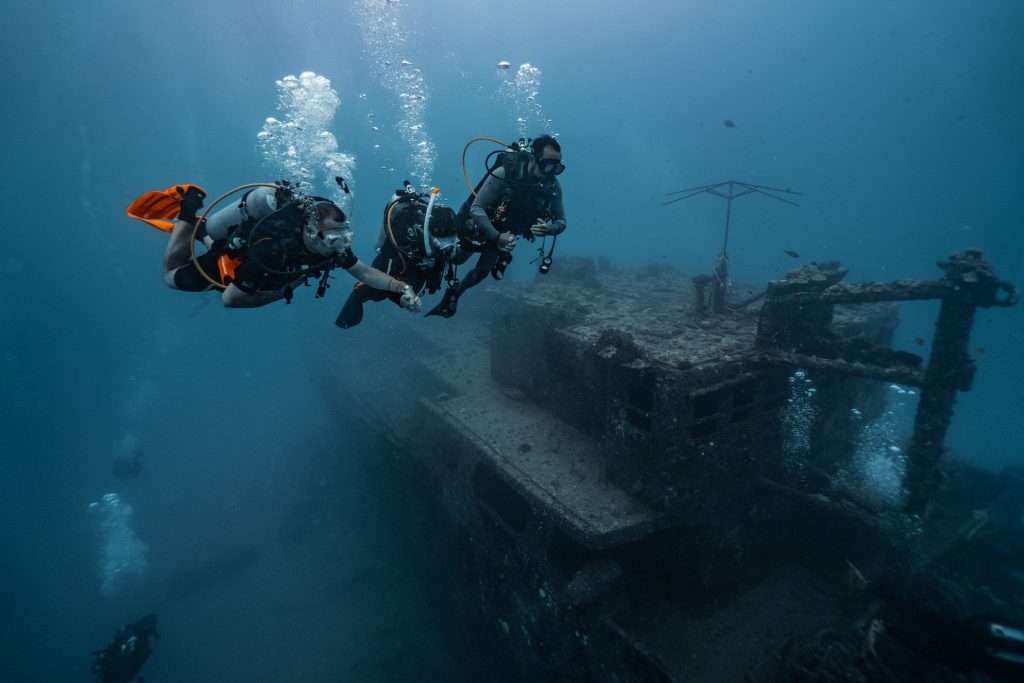
Brian quite obviously didn’t use his checklist. Or if he did, it was prior to turning off his O2 for the boat ride over to the dive site. Turning off his 02 during a boat ride, as a way to prevent the escaping of precious oxygen prior to diving was a procedure he and at least one other student in his class were taught as they began learning this machine.
Most importantly and most pertinently, he ignored his gut. For at least one month prior to this dive, he and his dive buddies had exchanged countless text and Facebook messages questioning the decisions and motivations of their instructor. Many of his classmates made comments about wanting to quit, knowing they were not getting the education, equipment, time they were paying for and expecting, yet they kept the comments amongst themselves. At no point did Brian raise these concerns to anyone outside his trusted circle of diving friends, and myself. I can only assume neither did his trusted circle of diving friends. Instead, he bit his tongue, turning a blind eye to the inadequacies he was experiencing and telling me, “I see it as a means to an end, I can get these certifications and be done with it so I can focus on how I want to do things when I have my own shop.”
It’s as simple and as complicated as that. My husband didn’t turn his oxygen back on prior to getting in the water. He failed to turn his computer back to dive mode prior to entering the water. He was distracted with his camera. He was more than likely uncomfortably warm from being in his dry suit. In the 24 hours prior to his dive he had been nervous for diving the new gas, frustrated with the level of support he was receiving from the school/shop/instructors, and feeling weary with his instructor in a conversation with a classmate in which he talked about dropping from the class which was answered with “good luck getting your money back.” There was pressure to complete this class.
So, now you have the information, how do you use this to help yourself? Talk about it. Don’t talk about putting blame on individuals, but focus on why these individuals didn’t feel comfortable raising their concerns at any point along the way. Talk about Brian’s errors and those surrounding this accident, while you might think this would never happen to you, talking about it might actually prevent it. Read my friend Gareth Lock‘s book, Under Pressure, (https://www.thehumandiver.com/underpressure) which discusses in broad terms why Brian’s decisions might have made sense to him at the time, but obviously not to us, now that we can dissect those decisions after the fact and how human factors play into dive accidents time and time again.
Some of you may think these events would cause me to turn my back on the diving community, to become afraid of it or angry at it. On the contrary. My husband (and I) have loved diving since 2015 when we were first OW certified, we understand the freedom and sense of self that can be found underwater and I want to continue to promote and encourage that, to give others the opportunity to experience this same feeling, albeit safely. I’m motivated to do just this, specifically in the military community (Brian was a naval officer) who I believe can use diving as a form of rehabilitation during and after their transition from service. I’ve started a scholarship foundation in Brian’s name to promote, encourage and inspire others to use scuba diving as a means of finding and executing a passion in life. Brian encouraged others to find and follow their passions to no end and he will continue to do this even in death. For more information or to donate to this, please visit: www.ashleybugge.com/scholarship where you can also learn more about Brian and how my kids and I are learning to find our passions again after his death.
Thank you.
Ashley Bugge
